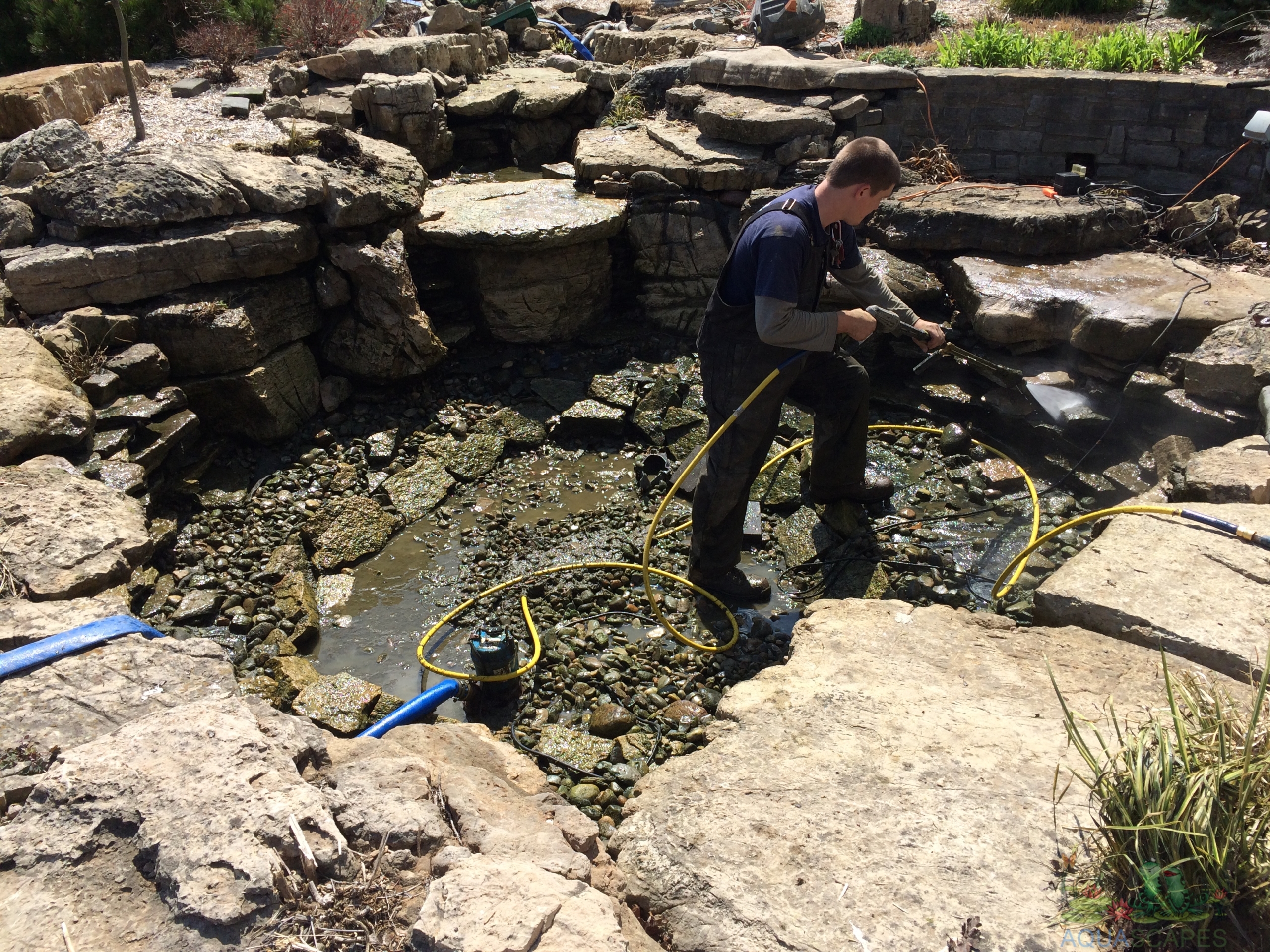How To Choose The Correct Pond Pump
Choosing a pump for your pond or fountain is a crucial step to ensure you maintain proper water movement. Failure to keep the water adequately circulated can result in stagnation, algae buildup, and mosquitoes. In addition, if you have fish, plants, or other aquatic life in your pond, you must keep the water healthy by evenly distributing the oxygen levels and other nutrients.
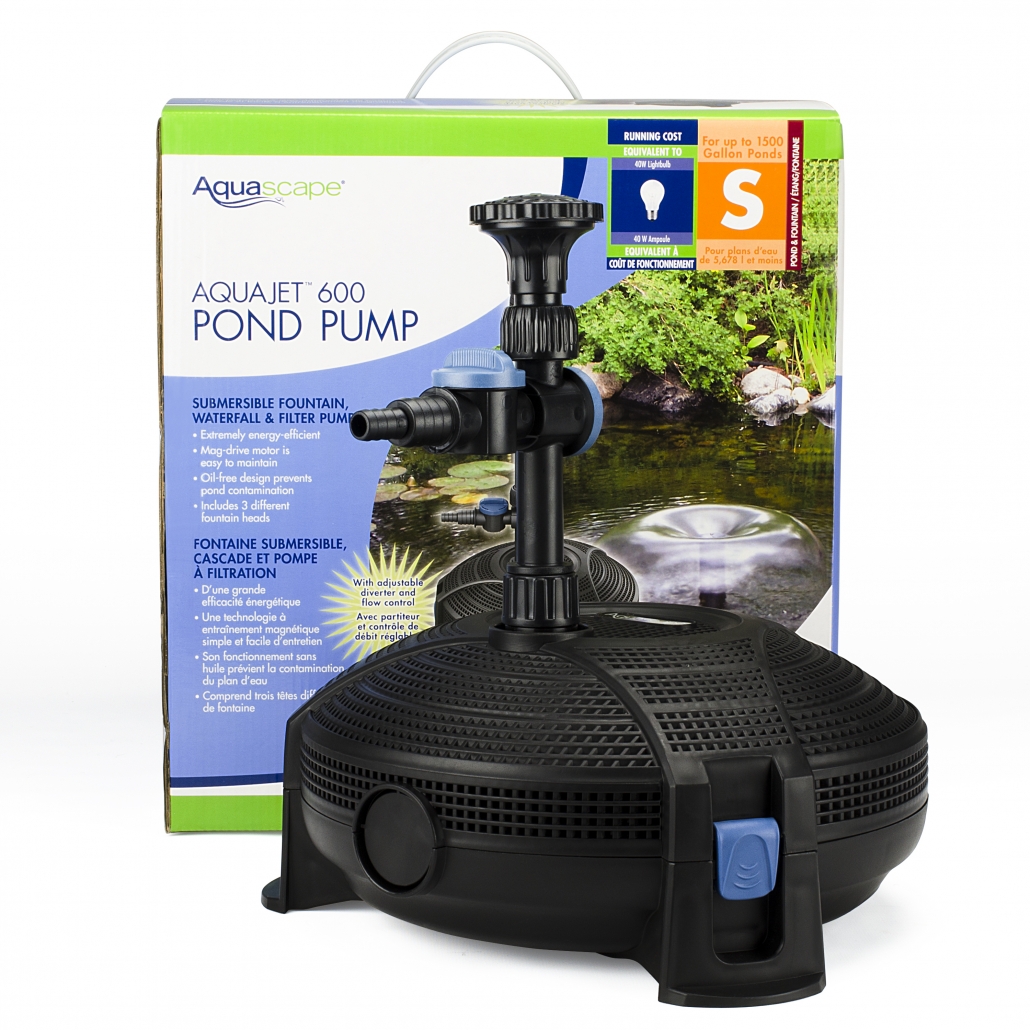
Types of Pond Water Pumps
There are two main types of pond water pumps: submersible and external (out-of-pond), also known as centrifugal pumps. Depending on the application, each pump offers specific advantages.
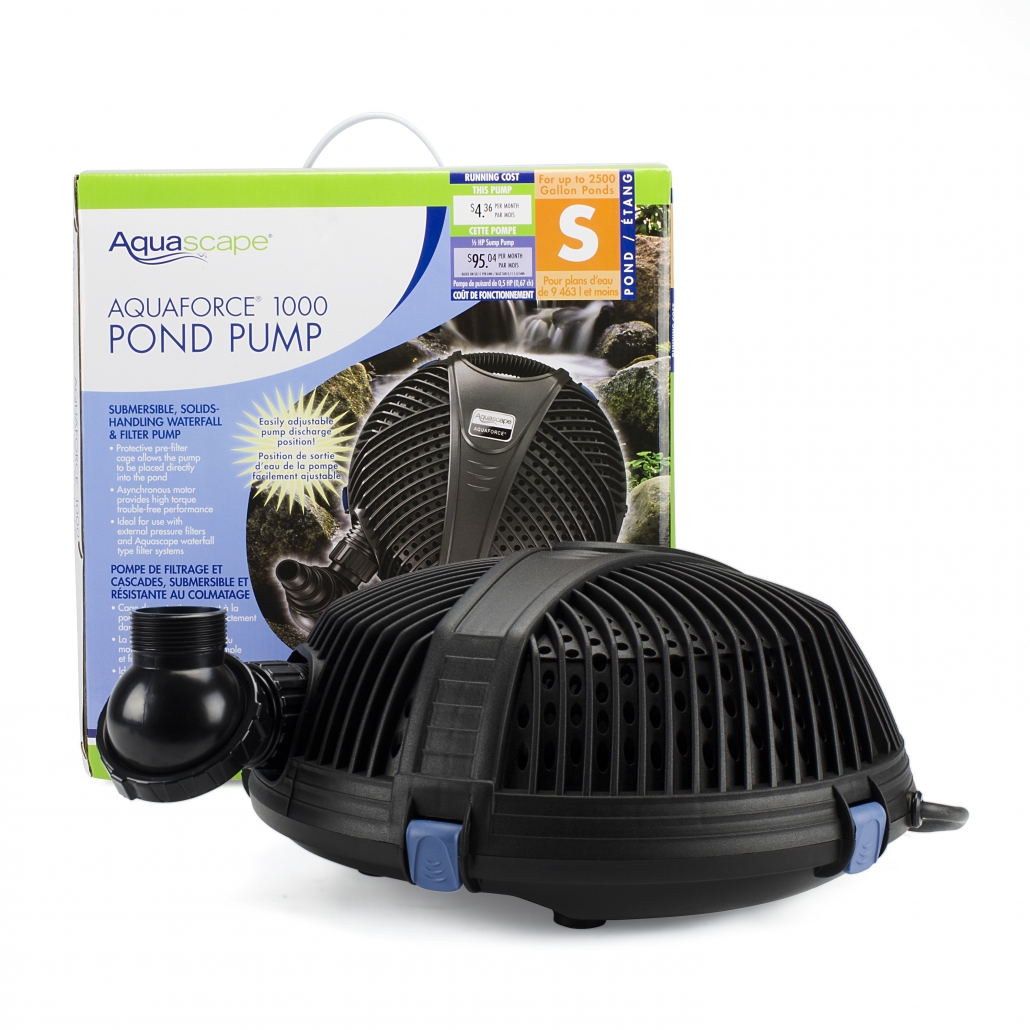
Submersible Pond Pumps
Submersible pumps are designed to be fully submerged underwater at the deepest part of the pond. They are placed directly into your pond or in a skimmer box or pond vault. Submersible pumps range in size from 50 to 5,000 gallons per hour. They are easy to install and are sometimes a more economical solution for smaller ponds (up to 1000 gallons of water). They are also quiet and can also be used to drain your pond. If you have fish or other aquatic life in your pond, you may want to consider a model that does not use oil because there is a danger of the pump seal breaking and oil coolant leaking into the water.
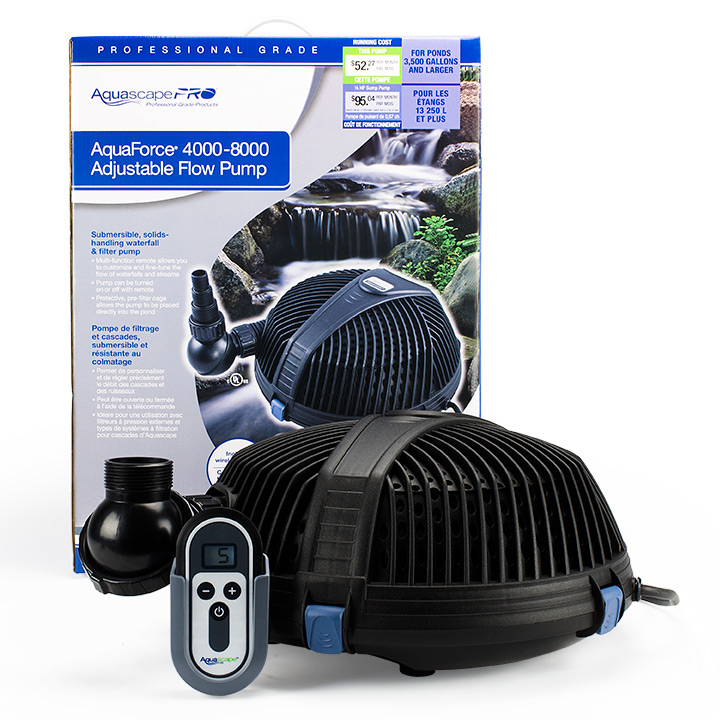
Centrifugal Pond Pumps
External or centrifugal pond pumps are a reliable, energy-efficient option. They are installed in a dry location near your pond. External pond water pumps are suitable for larger ponds (over 1000 gallons). Compared to a submersible pump, they are typically louder and more complicated to install; however, they are easier to maintain.
When selecting a pond pump, it’s essential to keep in mind that pumps have different cord lengths. Ensure the cord is long enough to go through the pond and plugin far away from the water. Some electrical codes specify that the outlet for water features must be at least 6 feet away from the water. Therefore, it is recommended that you avoid using an extension cord. However, if you must use one, make sure it’s suitable for outdoor use and plugged into a ground fault circuit interrupter (GFCI) so that it will immediately shut off if there is an overload.

How to Size a Fountain or Pond Pump
Pond pumps are sized by gallons per hour (GPH) at one foot of lift or height. Larger capacity pumps are rated by horsepower (HP). To determine the size pond pump, first, you need to calculate the volume of water in the pond. To calculate the volume of water in gallons, multiply the length x width x average depth x 7.5.
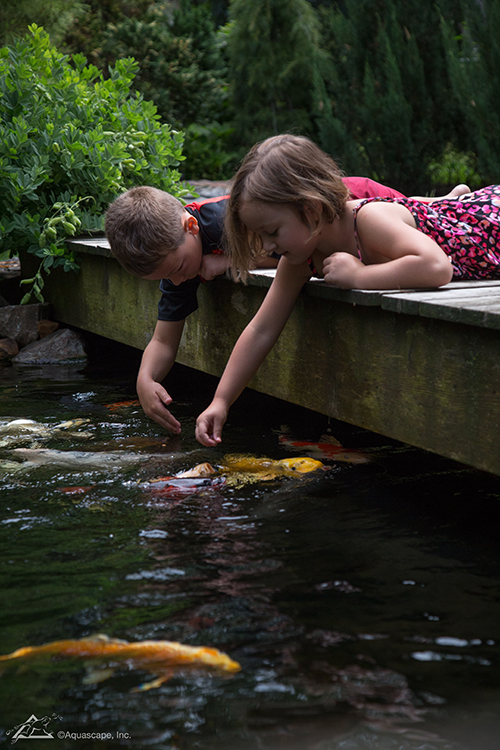
Water Circulation Factors
It is recommended that pond water is circulated at least once per hour. For example, if you have a 500-gallon pond, you need a pump that runs 500 gallons per hour at the discharge height. If your pond has a pressurized filter, you ideally want to turn the water approximately once every two hours. For example, if you have a 1000 gallon pond, you need a pond pump rated at a minimum of 500 GPH. If your pond has a skimmer or waterfall, the water should be turned approximately once every hour. Therefore, if you have an 1800 gallon pond, you will need an 1800 GPH rated pump.

Calculating Head and Lift Height
Two of the most critical measurements in sizing a pond or fountain pump are the maximum head height rating and maximum lift. Head height means the vertical height the pump raises water above the surface of the pond. The pond fountain pump’s top height can lift the water to is called “Maximum Head” or “Max Head.” The “Head” is measured straight up from the water level of the pond. Its length then measures any horizontal/diagonal flow, and 1′ of “Head” added per 10′ of horizontal/diagonal distance. To calculate the lift, you need to measure how far the water in your fountain has to travel from the pump’s location in your rush to the top of the fountain where the water comes out. Then you need to select a pump that lifts higher than that measurement. For example, if that distance is 24”, than you will need a fountain pump that lifts at least 36” tall. The “maximum lift” is the maximum height that the pump will raise the water.
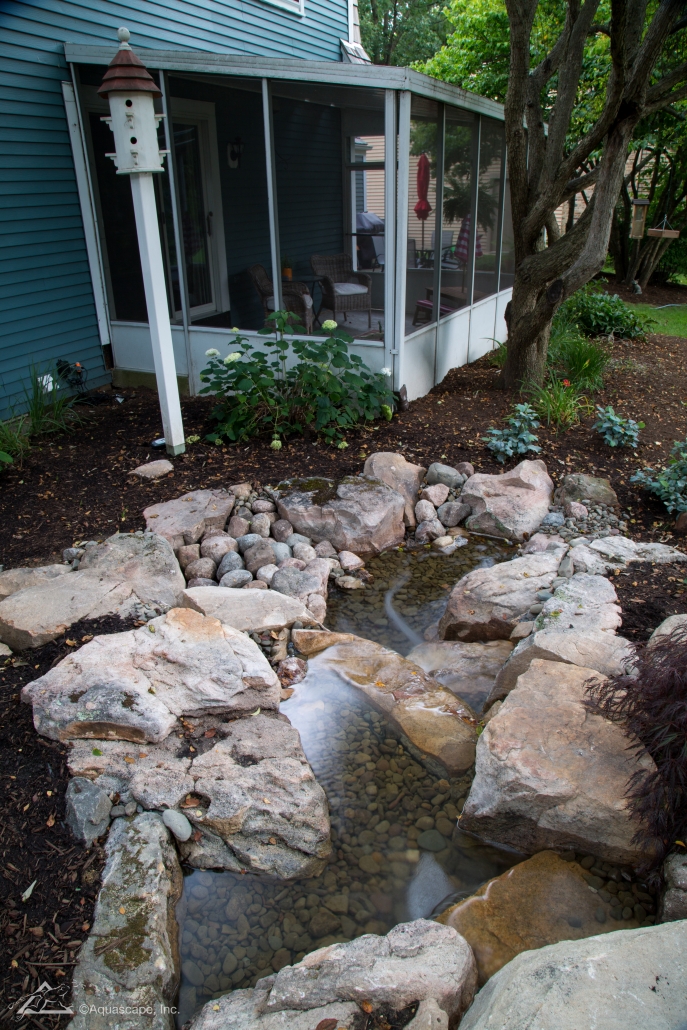
Selecting the Proper Pond Water Pump Tubing
It is also essential to use the correct tubing size because it directly affects the pond pump‘s maximum lift capability. If you use smaller tubing than specified, you will limit the pump’s maximum lift and the amount of water circulated.
Choosing the right pond water pump for your pond or fountain requires careful consideration and a little upfront research. However, doing so will go a long way toward keeping your water clean and healthy and your pump operating efficiently.
BROWN TINTED WATER – My water has a brown tint to it. What product can I use to fix it?
If you have brown or tea-colored water, try using Activated Pond Carbon. Brown water can be caused by leaves and other debris within the vicinity of the pond. Activated Pond Carbon is designed to clear the water from the extra nutrients that are introduced to the pond through the surrounding debris and conditions. For effective results, the carbon treatment should be changed about every 2 weeks.
GREEN WATER – How do I get rid of green water?
For green water issues, Rapid Clear, a flocculent that is 100% safe for fish, plants or wildlife, can be used. This product is a fast acting treatment that can solve cloudy water in just a few hours by physically causing the particulates floating in the water to clump together into larger particles that can be filtered out.
There are several other effective products that you can use to help clarify the water. A combination of Beneficial Bacteria, EcoBlast and SAB Stream and Pond Cleaner is the ultimate way to have perfectly balanced, clear water. The Beneficial Bacteria and SAB both help consume excess nutrients in the water, break down decaying organics and reduce sludge and odor issues. SAB also includes a powerful phosphate binder that locks up this nuisance nutrient. These two products can be used as often as once a week.
Original post from Aquascape, Inc. dated September 13, 2015.
How to Prepare Your Pond for the Spring!
How to prepare your pond for the Spring!
Not all water features require an annual cleanout. If there is a layer of muck at the bottom of the pond and the water is dark in color, it would be a good idea to do a full clean-out. If there is just a small amount of debris that you can stir up and capture with a net and the water looks clear, a little tidying up and small water change is all that’s in order.
The best time to perform a pond clean-out is before the water temperature in the pond goes above 55º F.
Here’s what you’ll need to get started:
- A clean-out pump with approximately 25 ft. of discharge hose.
- A high-pressure nozzle for your garden hose, or a power washer.
- Garden shears for trimming plants.
- A large plastic bin or container to hold fish and any other critters you find during the clean-out.
- Buckets to collect leaves and debris
- A fish net.
- Aquascape Pond Detoxifier™ water conditioner to remove chlorine and chloramines prior to putting fish back.
- Aquascape fertilizer tabs.
The first step is to drain the Pond or Pondless® Waterfall
- Place the clean-out pump in the deepest point of the pond or in the Pondless® Waterfall Vault or Snorkel in order to remove the water.
- Drain the water into the surrounding landscape. Be sure to relocate the pipe two or three times to allow the water to seep into the ground and not flood the yard.
- If you have fish, use some of this pond water to fill up the holding pool. The fish can be removed from the pond using a net once the water is around knee-high so you can easily catch them.
- Don’t keep the fish in the holding pool for more than several hours. Keep them in a shady spot with a net over the top of the pool to prevent them from jumping out. If your have a winter aerator or bubbler, you can use it in the holding pool to help oxygenate the water.
Don’t Overdo the Cleaning
- Rinse the inside of the pond. You can also use a pressure washer to help remove debris from the rocks and gravel.
- Don’t try to scrub all of the algae away. Some algae on the rocks will prove beneficial in developing your ecosystem.
- Use the gentle stream from a garden hose to rinse the rocks and gravel. Start at the top and work your way down to the bottom. Periodically turn the clean-out pump on to remove the dirty water. You can discontinue the periodic pumping once the water rinsing down to the bottom begins to look clear. Remove the pump and begin filling the pond with the garden hose.
Cleaning the Filters
- Remove any debris from the bottom of the skimmer or Pondless Vault. This can be done by hand or by using the cleanout pump.
- Remove the media nets and filter pads from the BioFalls® filter, and rinse then off so they are free of debris.
Finally, Put Your Fish Back Into Their Clean Home!
Your pond clean-out is now done and it’s time to put your fish back into their home. Once your pond is half full, you can perform these steps to safely place your fish back in the pond:
- If you’re on city water, add Pond Detoxifer to the water so it is safe for fish.
- Dip a five-gallon bucket, or similar sized container, in the holding tank and fill it with water.
- After you’ve caught a fish, place it in the bucket and set the buckets in the clean water.
- After about 15 minutes, periodically begin splashing some pond water into the bucket.
- By now, the temperature of the pond and the bucket water should be close to the same. You are ready to spill the fish into their spring-cleaned home.
Sit back, relax and enjoy your sparkling clean water feature!
Original post from Aquascape, Inc. dated September 08, 2015.

